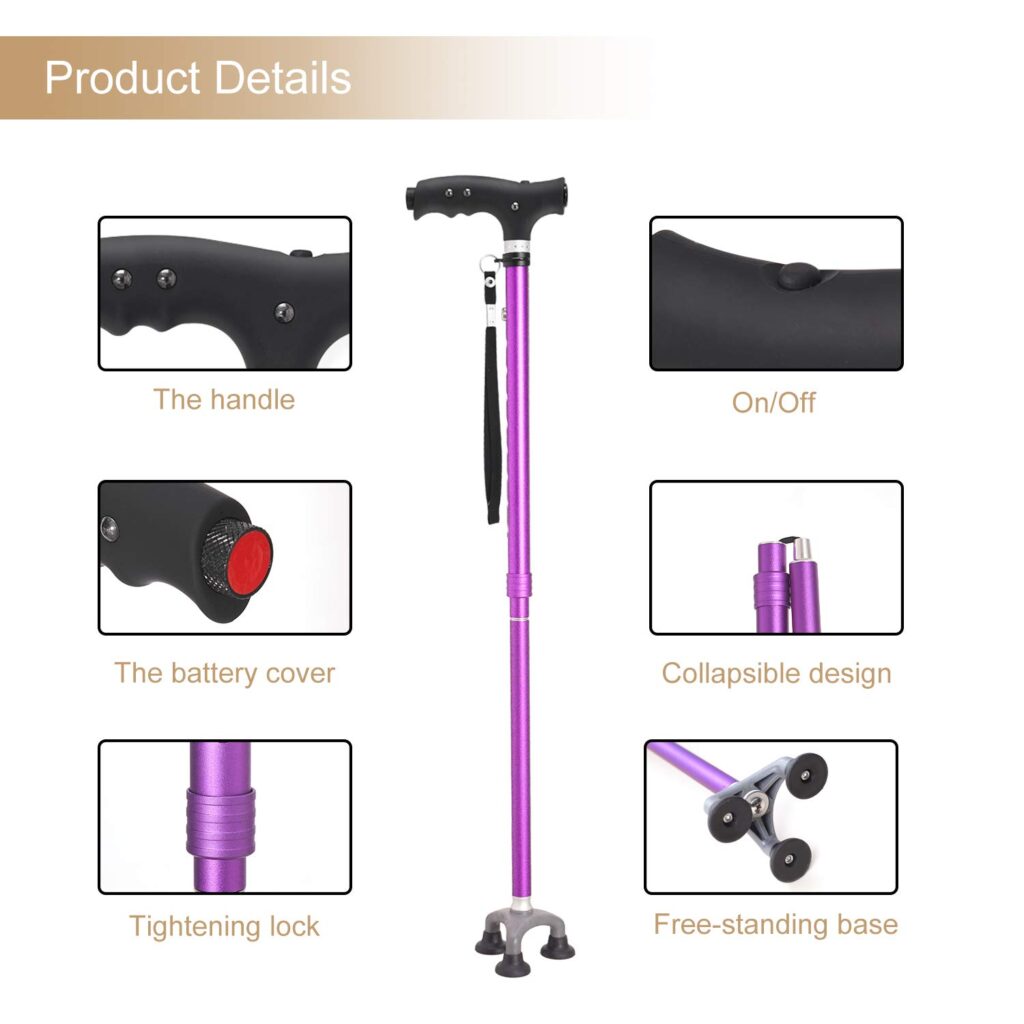What are some features to look for in a walking cane for hiking, such as adjustable height or shock absorption?
Walking canes for hiking come with a range of features designed to provide hikers with the support, stability, and safety they need on the trail. Here are some of the key features to look for when choosing a walking cane for hiking
Adjustable height
Many hiking canes are adjustable in height, allowing hikers to customize the length of the cane to their own height and the terrain they’ll be hiking on. Adjustable hiking canes can also be useful for hikers who may experience changes in their physical abilities over time.
Shock absorption
Some hiking canes feature shock-absorbing mechanisms in the tip or handle, which can reduce the impact of hiking on joints and muscles. This can be particularly beneficial for hikers with joint pain or other physical issues.
Grip
The grip of your hiking cane is important for providing a secure and comfortable hold, particularly when hiking on rugged or uneven terrain. Look for hiking canes with contoured or cushioned grips, which can reduce hand fatigue and increase comfort over long hikes.
Tip
The tip of your hiking cane should provide good traction and stability on the terrain you’ll be hiking on. Rubber tips are suitable for flat or relatively easy terrain, while carbide tips are more durable and provide better traction on rough or slippery terrain.
Weight
The weight of your hiking cane is important for comfort and ease of use. A lightweight hiking cane may be more comfortable to carry over long distances, while a heavier hiking cane may provide more stability and support on rugged terrain.
Durability
A hiking cane needs to be durable and strong enough to withstand the wear and tear of hiking on rugged terrain. Look for hiking canes made from materials such as aluminum, carbon fiber, or wood, which are durable and can withstand harsh weather conditions.

Portability
If you’ll be carrying your hiking cane for long periods of time, you may want to look for a hiking cane that is easy to pack and transport. Many hiking canes can be disassembled or folded down for easy storage in a backpack or carrying case.
Wrist strap
A wrist strap can help keep your hiking cane secure and prevent it from slipping out of your hand. Look for hiking canes with adjustable wrist straps that can be tightened or loosened as needed.
Interchangeable tips
Some hiking canes come with interchangeable tips that allow you to switch between rubber and carbide tips depending on the terrain you’ll be hiking on. This can be a useful feature for hikers who frequently encounter different types of terrain.
By considering these features when choosing a walking cane for hiking, you can select the right cane for your needs and enjoy the great outdoors with greater comfort, confidence, and safety. Remember to try out different hiking canes before making a final decision, and consult a medical professional if you have any concerns about using a hiking cane.
Maintenance of hiking sticks
Carbon fiber canes cannot be subjected to too much lateral force, nor can they be bumped, so be careful when using them. After the trekking poles are used up, if they will not be used for a long time, they should be stored upright with the opening facing downward.
Medical cane
This type of cane has its own name – “walking aid”, which can be divided into the following three types according to the number of contact points with the ground: general cane: there is only one contact point with the ground, and the advantage lies in dexterity. However, because it provides less support and balance, it is only suitable for use when moving slowly.
Tripod Cane
There are 3 points of contact with the ground. Due to the large base area, it can provide better support and stability than ordinary canes. These canes are especially useful on uneven surfaces.